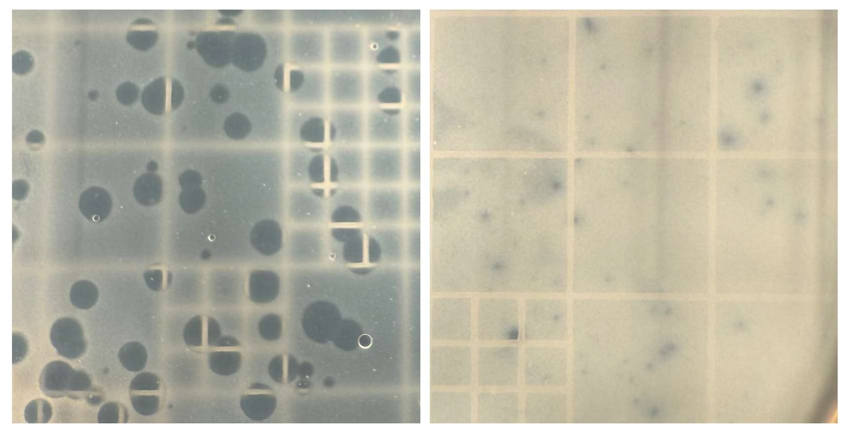Bacteriophages, also known as phages, are diverse types of viruses that infect bacteria. The phages code for their own enzymes and proteins to seize cellular resources to generate more phages. In the lytic cycle, the phage genome is expressed in the host cytoplasm and leads to the assembly of new phage particles and the lysis of the host cell. Alternatively, in addition to the lytic cycle, some phages can use the lysogenic cycle where they incorporate their genomes into the host genome and remain dormant while the host bacterium reproduces normally. Thus, every time the host genome is replicated, the integrated phage genome is replicated as well.
Bacteria have evolved several kinds of defense mechanisms against phages. For example, bacterial mutations can change binding sites for phages and prevent the phages from attaching. Other internal defense mechanisms, such as restriction and modification systems and cell suicide, are complex and defeat the phage once its genome enters the cell. Restriction and modification systems utilize two bacterial enzymes: a restriction endonuclease and a methlytransferase. Restriction endonucleases target specific short DNA sequences and make double-strand cuts in the DNA. To prevent this same short DNA sequence from being cut in the bacterium’s own genome, the methlytransferase adds a methyl group to the C5 carbon of nucleotides in the target sequences that prevent restriction enzyme cleavage. Although both enzymes target the same nucleotide sequence, the restriction endonucleases bind more efficiently, so incoming DNA is usually cleaved before it can be methylated.

Caulobacter vibrioides is a bacterial species that is susceptible to numerous phages. Interestingly, bacteriophages grown on Caulobacter vibrioides strain CB15 have reduced plating efficiency on other Caulobacter strains. In their new study titled "Caulobacter Strains Code for Novel Restriction Endonucleases That Protect Them from Bacteriophage Infections", former Post Bachelors PREP program scholar Ian Sisto and his mentor Dr. Bert Ely sought to determine the cause of this reduced plating efficiency. They performed a series of experiments that demonstrate that the reduced plating efficiency is due to a novel set of restriction and modification enzymes that are present in most of the Caulobacter strains they tested. Their study further demonstrated that one of these systems recognizes the nucleotide sequence 5′-ATNNAT-3′. The genes coding for these enzymes had not been annotated or identified, suggesting that the proteins may differ from the common types of bacterial restriction and modification enzymes.